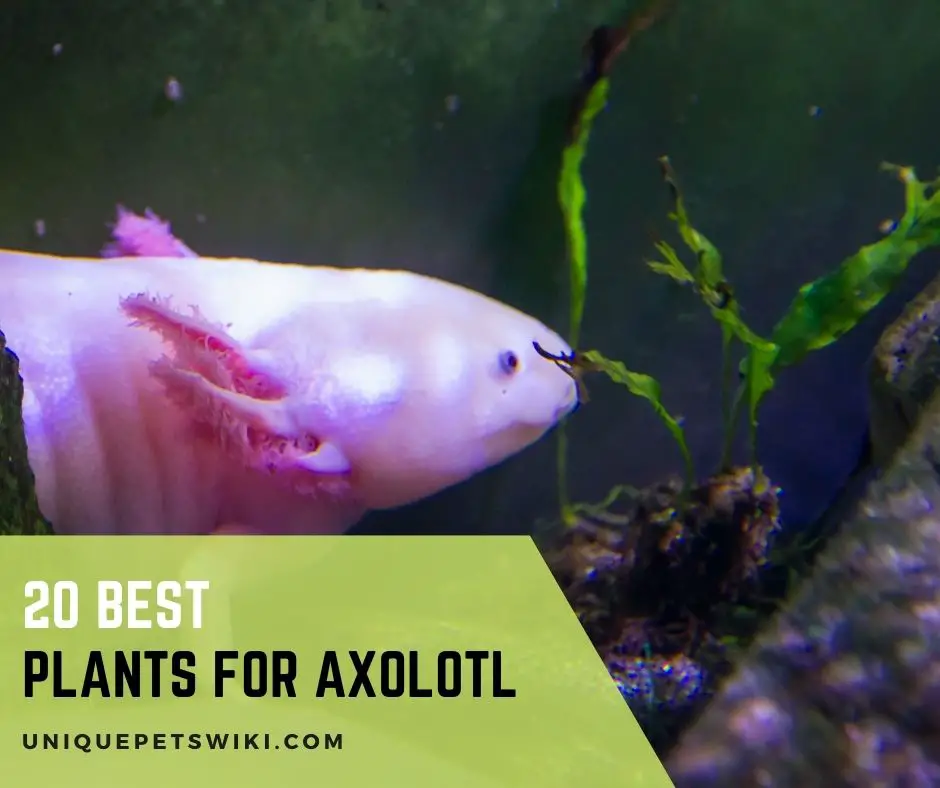Exotic pets, such as axolotls, require special care and a comfortable environment to simulate their natural habitat.
A planted axolotl tank is one approach to mimic the axolotl’s natural environment!
You may be wondering, as an axolotl owner, what plants are safe to use in an axolotl tank, what plants are simple to grow, and don’t require much care but are highly beneficial for your pet.
If you’re looking for the best plants for axolotl, you’ll find them all here, including the best safe plants, what to look for in a good plant, the benefits, and much more!
Contents
Why Do Axolotls Need Plants?
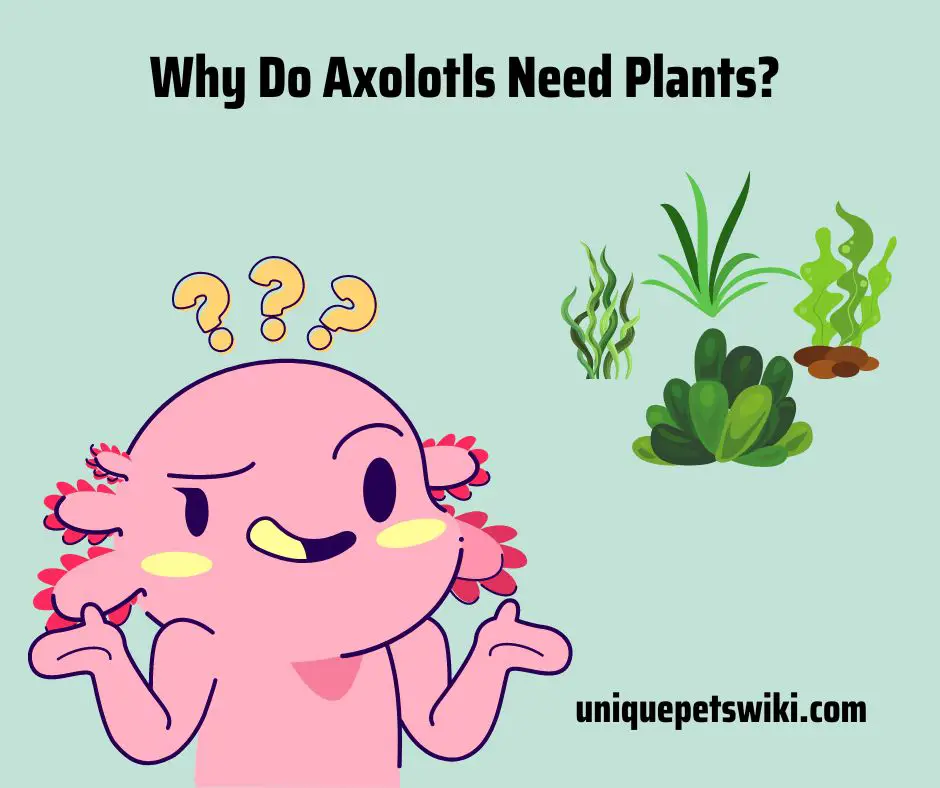
In the wild, the axolotl loves to live in the bottom of Xochimilco’s canals and lakes. These creatures frequently create reed or stone structures for protection.
The axolotl should be kept in a temperature-controlled aquarium with plants, pebbles, and hiding spaces to replicate its natural habitat.
Despite their preference for rocks and caves, axolotls adore the presence of axolotl tank plants.
When placed in an Axolotl’s tank, plants can provide a range of benefits. To begin, axolotls are found in thickly forested places in their natural habitat.
In other words, adding real plants to an axolotl aquarium can help them feel at home!
Axolotls’ toes and feet are incredibly sensitive, and they love to rest on soft ground. An excellent carpet plant or anything similar can assist them in obtaining the required soft surface.
Another thing to keep in mind is that Axolotls can be highly fearful and prefer solitude. Certain leafy plants can help provide this privacy.
Additionally, live aquarium plants contribute to the production of oxygen in the tank while also screening out toxins. Finally, real plants enhance the aesthetics of your aquarium.
Also read: Do Axolotls Need Air?
What to Look For in a Good Plant
Pairing axolotls and plants can be challenging. However, with enough forethought, you can select plants that will thrive alongside your axolotl!
However, before we introduce a plant into Axolotl’s aquarium, we must carefully analyze the traits that the plant should possess.
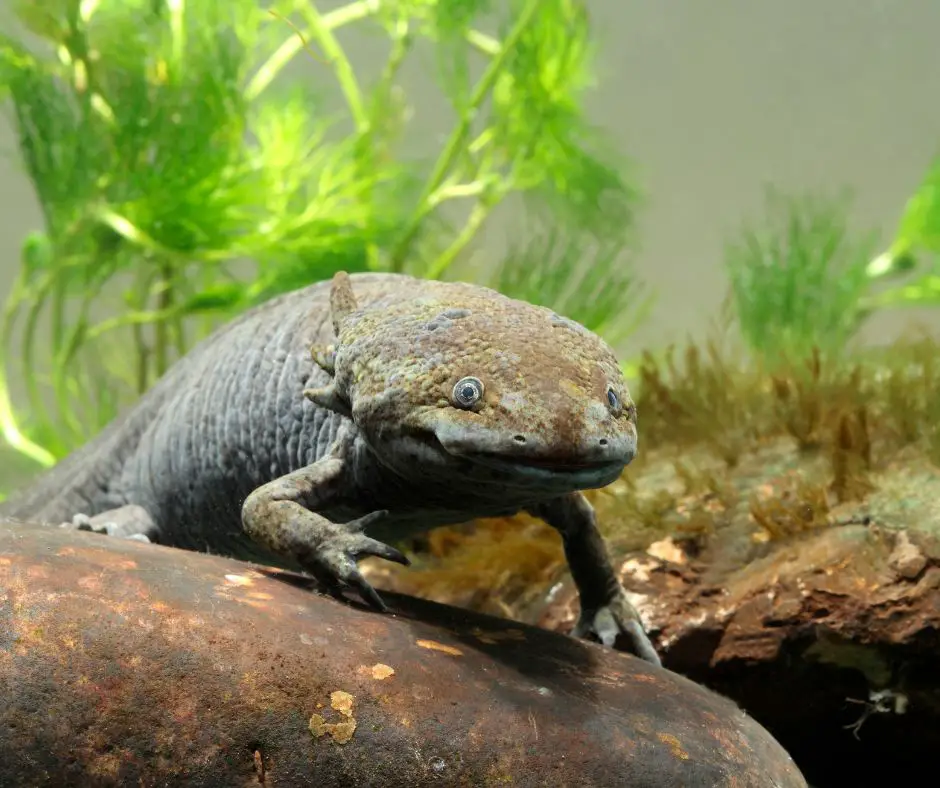
Safe to Eat
To begin, it must be safe to consume. Axolotls may actually consume the plants if they feel like it, or they may simply nibble on some leaves and spit them out.
There is no way to avoid an axolotl munching on your plants.
At some time, your axolotl will consume part of your live aquarium plants, most likely sooner rather than later. As a result, you will need to buy live plants that are not harmful to axolotls.
Won’t Cause Injury
Another feature of a good plant for an axolotl is that it should not cause injury.
Gravel should not be used as a substrate in the tanks of axolotls since their toes and feet are extremely sensitive. To put it another way, they require sand or some type of tile.
This means that any plant that requires a gravel substrate should not be kept in an axolotl aquarium.
Additionally, plants with sharp leaves, plants with thorns should also be avoided as these types of plants can cause harm to your Axolotl. We don’t want that do we?
Plants that can be fastened to rocks or driftwood, as well as plants that can be rooted in the sand or floating plants, are required.
Easy to Grow
One thing to keep in mind while setting up an axolotl tank with plants is that these species enjoy the water that is rather chilly and low in light.
The plants you chose for your axolotl tank must therefore be easy to cultivate and able to withstand cooler temperatures and low lighting conditions.
Also read: Axolotl Temperature (Tips to Maintain an Ideal Temperature)
20 Best Plants for Axolotl Tanks
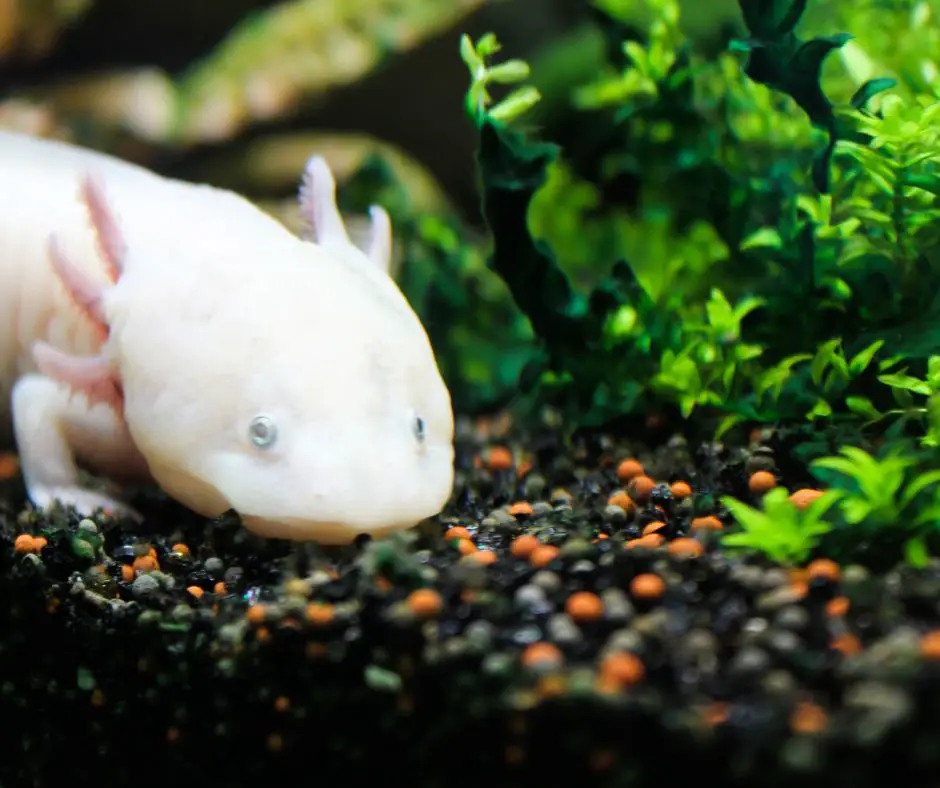
Table below is a useful breakdown of the top 10 plants for Axolotls; we believe these particular 10 are safe for them to eat, wonderful for beginners, easy to grow, and, most importantly, do not hurt the Axolotl.
| Safe to Eat | Won’t Cause Injury | Easy to Grow | |
| Java Fern | Java Fern is completely safe to be eaten by your Axolotl | There is no risk of damage due to the leaves’ fineness and softness. | Java Fern is easy to grow as just by dumping them into the water, they can immediately begin to develop. |
| Anubias | They are non-toxic when consumed | This has sleek and sturdy leaves, resulting in no harm to your pet. | They are easy to grow because they are low-light plants that can adhere to rocks and other hard surfaces. |
| Vallisneria | Safe to eat | Leaves are too slender to cause harm for Axolotl | Low maintenance and can survive in lowlight conditions |
| Duckweed | This plant is safe to eat because it contains a high protein content, which benefits these salamanders. | Leaves are light so you don’t have to worry about your Axoltol being inured. | This is an easy-to-care-for floating plant. |
| Java Moss | Java Moss is safe for Axoltl to chew | This plant is not harmful to Axolotl. | Java Moss is easy to grow as it is adaptable to a wide range of water, temp, and light situations. |
| Pothos Plants | Edible | Has thin leaves that do not pose a threat to axolotls | This plant is easy to care for |
| Guppy Grass | Safe to eat | Small and thin leaves resulting in no harm | This plant is a breeze to maintain. |
| Marimo Moss Ball | This plant is safe to eat as long as it is small enough. | The right size can cause no injury to your pet. | Easy to maintain because of low lighting needs |
| Anacharis | Safe to eat | Can do no harm because of its smooth leaves | Easy to grow because it can live in low light and cold water. |
| Sweet Potato Vine | This plant is not toxic to Axolotl. | Their leaves and stems are smooth | Easy to grow because it requires little light. |
Java Fern
To begin, Java Fern is perfectly safe for your Axolotl to eat. Additionally, this plant is unable to cause harm. There is no risk of damage due to the leaves’ fineness and softness.
Although the leaves of this plant can reach a height of ten inches, they are insufficiently strong to allow an axolotl to escape.
Additionally, this plant thrives in the sand, it also thrives when attached to something, such as driftwood.
Furthermore, this plant is quite easy to grow. Even though this plant thrives in the sand, it can also thrive when attached to something, such as driftwood.
Plus, they can live in quite chilly waters and require little light.
Due to its size and rather moderate growth rate, it makes a great background or midground plant in axolotl aquariums. Java ferns are a fantastic addition to axolotl tanks.
These plants’ leaves are fairly broad and have a very attractive brilliant green color.
Those broad leaves might provide an excellent hiding place for your axolotl. Additionally, they filter the water and produce oxygen, which results in a clean tank for your axolotl.
12 Leaves of Java Fern Microsorum pteropus
Anubias
Anubias are quite popular with aquarists worldwide due to their durability. One of the most distinguishing features of this plant is that it is non-toxic when consumed.
Also, Anubias will not hurt your pet due to their sleek but sturdy leaves.
Anubias are epiphytes and low-light plants that can adhere to rocks and other hard surfaces. They grow at a snail’s pace even under ideal conditions.
These huge and spherical leaves also provide excellent hiding places for axolotls.
Anubias is an excellent midground or background plant that may also be utilized in larger tanks as a front plant. Additionally, this plant is effective at water filtering and oxygenation
SubstrateSource Anubias Nana Petite
- Anubias Nana Petite is a great addition to your tank as it instantly will create a lush environment with its dark green tone and dense leaf structure.
- Can be easily attached to driftwood or stones and is suitable for any size tank; place along the foreground or midground.
- Easy care plant; it has low to medium light requirements, can benefit from regular fertilization, and does not require additional Co2.
- Ships 3-5" tall in a 2" pot rooted in wool which should be removed prior to planting. Gently squeeze the pot, peel back the wool to expose the roots, and rinse.
- We are confident in our plants and provide a 100% DOA (dead-on-arrival) replacement policy.
Last update on 2022-12-29 / Affiliate links / Images from Amazon Product Advertising API
Water Lettuce
Axolotls thrive in water lettuce, which is a popular aquarium plant. Water lettuce is tough to maintain and is not classified as beginner-friendly.
But this axolotl plant will thrive if the right conditions are met.
They are floating plants with dangling roots that, if properly maintained, will develop a maze of roots that will add character and appeal to your aquarium.
Water lettuce is an excellent algae fighter that helps to improve the quality of the water. Plant care is a stress-free activity.
However, If you don’t control the plant’s reproduction, you’ll end up with a lot of water lettuce on the surface of your tank.
2 Water Hyacinth Bundle + 2 Water Lettuce – Live Pond Plants Bundle
- You get 2 Water Lettuce, 2 Water Hyancinth of about 3-5 inches in diameter
- These oxygenating plants keep the water clean and filtered in your water garden.
- They serve as natural biofilters to your pond
- Controls algae by absorving nutrients from the water
- Please note these plants ship with trimmed roots as sometimes they tend to fall off during transit due to heat. In case roots fall off upon receiving them, just place them in your pond and give them couple of weeks so they can re-establish themselves. If you live in areas experiencing above 90 temperatures, please make sure these plants are retrieved as soon as possible as extreme heat could kill these plants while in a box. Lastly, these plants can not ship to: AL, FL, SC, TX, WI, LA
Last update on 2022-12-29 / Affiliate links / Images from Amazon Product Advertising API
Amazon Frogbit
The Amazon Frogbit is safe for axolotls to eat. The Amazon Frogbit doesn’t need a lot of light.
As an added bonus, Amazon frogbits are able to survive in cooler waters. These plants don’t require a substrate because they can grow in a wide variety of temperatures.
Furthermore, they will guarantee that the tank does not receive an excessive amount of sunlight, which is excellent for the axolotls, who are sensitive to sunlight.
This is an extremely low-maintenance floating aquarium plant and they want a more secluded location with less light.
Their leaves are coin- or teardrop-shaped, but they can also create vast underwater root complexes that reach deep into the tank.
Bear in mind, though, that Amazon frogbit can soon take over the tank and complicate feeding.
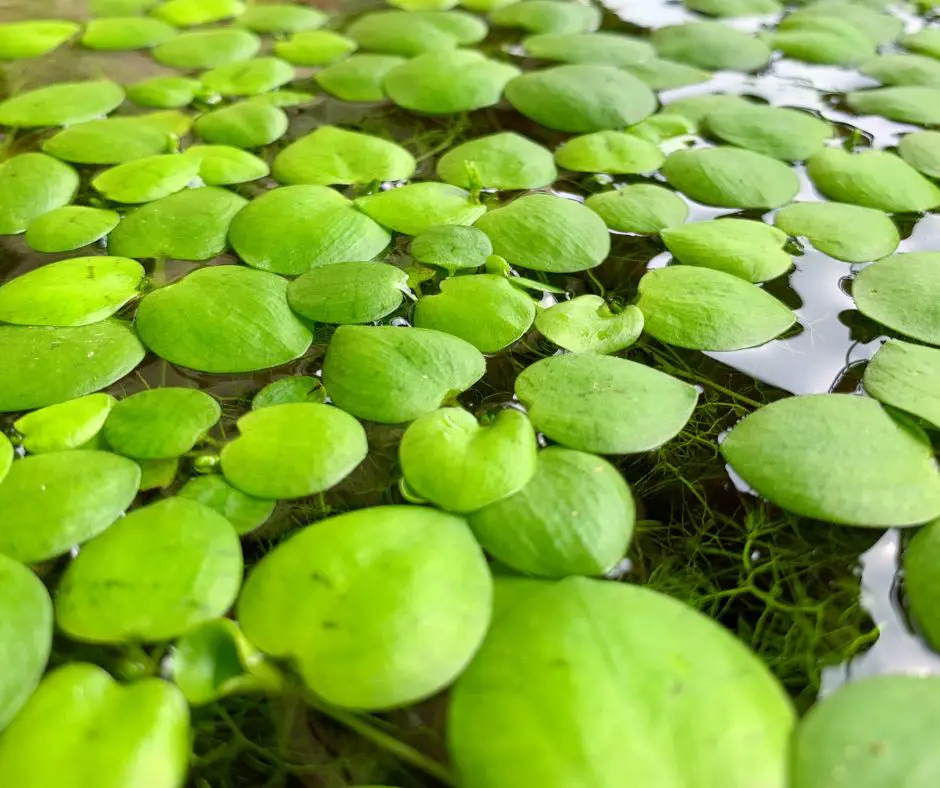
Pothos Plant
Pothos plants are edible and thrive in a range of axolotl tank settings due to their hardy floating nature. Plus this plant is easy to care for!
Simply place the roots of the plant inside the tank and the leaves on the outside to prevent your pet from uprooting it. There is no requirement to use a substrate to anchor the plant.
The plant uses a natural filtration process to produce high-quality water. Ammonia, for example, can be removed from the axolotl tank by Pothos.
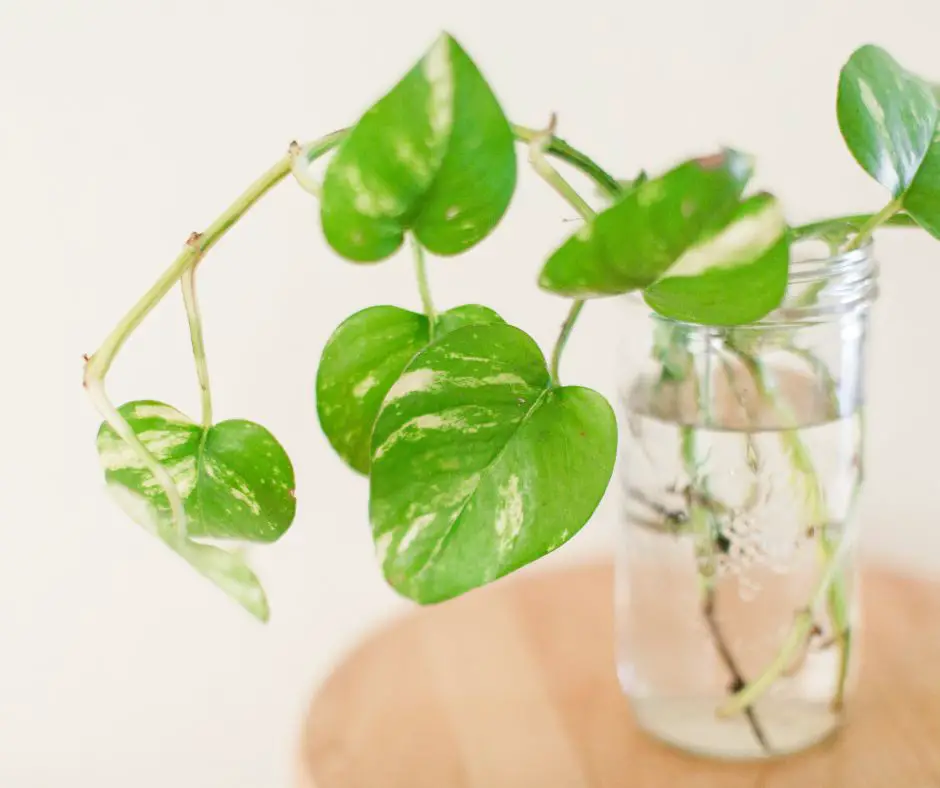
Java Moss
Another great plant for you Axolotl on the list is Java moss. Java Moss is adaptable to a wide range of water, temp, and light situations.
Additionally, it is safe for Axolotl to chew! It’s wonderful since it requires little care and may be used as a foreground, midground, or background plant, or even to create a carpet that runs the length of the tank.
You may easily secure the plant to tank or aquarium pebbles and/or wood to allow it to grow without being harmed by an axolotl.
Finally, Java Moss is an excellent absorbent of harmful ammonia, which is produced naturally by an axolotl’s bodily functions.
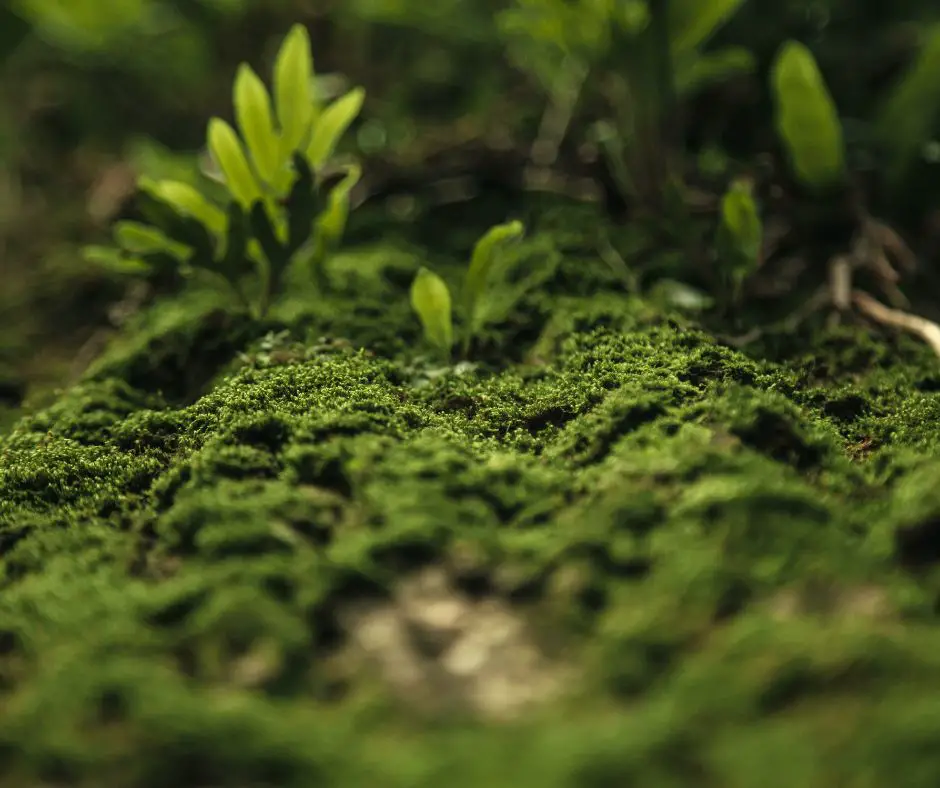
Anacharis
Anacharis is a species of freshwater plant that is also known as water weeds. These plants are safe to eat, and visually appealing, with a thick stem and tiny green leaves.
It’s a great type of shield for your axolotl because it keeps it out of direct sunlight.
Axolotls prefer lower temps, and Anacharis can thrive in such an environment. Because Axolotl and Anacharis have close optimal water parameters, they can peacefully coexist in the same aquarium.
Anacharis also doesn’t need a lot of light to function. You don’t even have to put it in the substrate to get it to grow.
Lastly, Anacharis plants are easy to care for and can withstand a wide range of conditions. Water can benefit greatly from the oxygen this plant produces.
Also read: Full Requirements & Water Conditions for Axolotl in Captivity
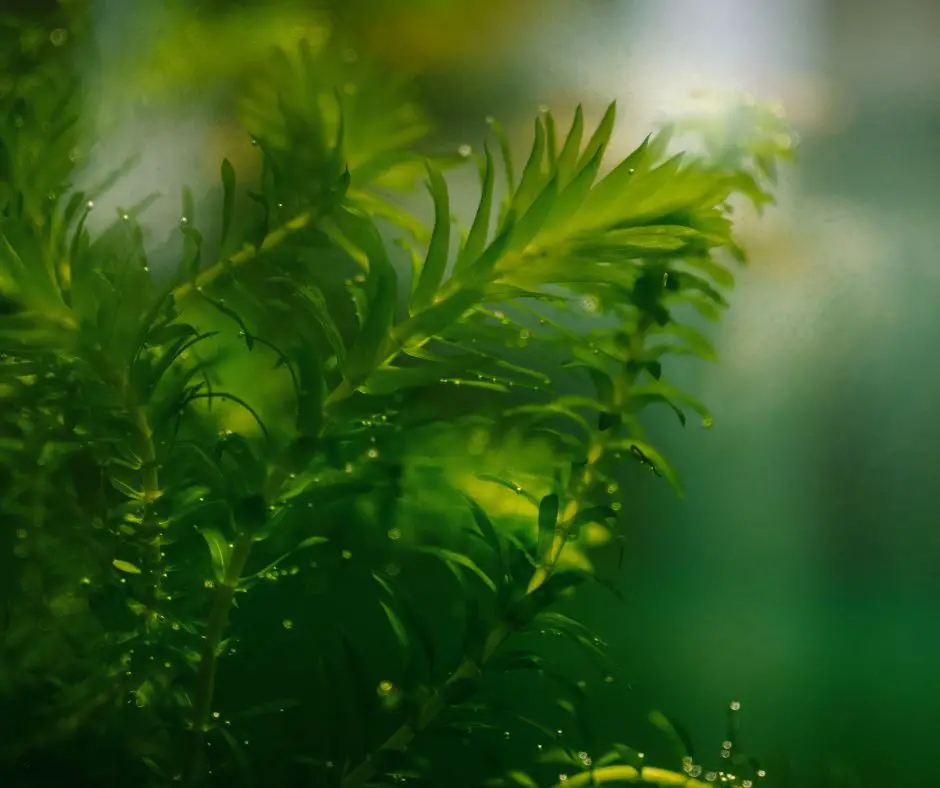
Duckweed
Duckweed is another beneficial plant for your Axolotl. This plant contains a high protein content, which benefits these salamanders.
This floating plant is vitamin-rich and can supply a significant amount of nutrition for your pet.
The leaves are light so you don’t have to worry about your Axolotl being inured.
When it comes to successfully blocking out excess light, duckweed is the way to go! This is an easy-to-care-for floating plant. This plant creates a “carpet” on the water’s surface.
Duckweeds filter and improve the water quality, reducing algae growth in the process. They are relatively easy to grow in an axolotl aquarium and are tolerant of a wide range of temperatures.
However, it can multiply rapidly and is difficult to eradicate once established in a tank.
Additionally, introducing duckweed into a tiny tank (less than 20 gallons) is not a smart idea, as it can promote overgrowth and make cleaning more difficult.
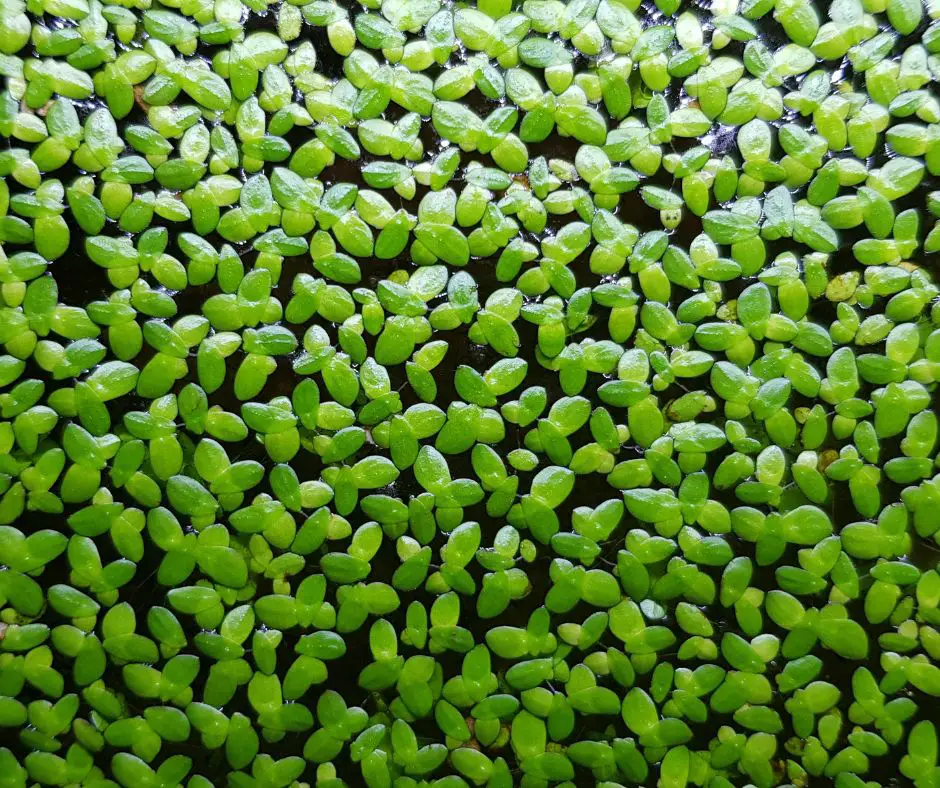
Salvinia Natans
Salvinia Natans is an excellent choice for a floating freshwater plant in your axolotl’s aquarium. This is a harmless plant to put in because the leaves are delicate.
Salvinia Natans is a non-toxic floating plant. Its delicate leaves make it a great choice for the aquarium of your axolotl.
Additionally, this low-maintenance plant features green, fluffy leaves with a beautiful hairy texture on the upper surface. Moreover, it helps keep algae from taking over the aquarium.
Salvinia Natans thrives in cooler temperatures and low light levels, which is suitable for the Axolotl. Salvinia Natan can grow rapidly when provided with adequate nutrients.
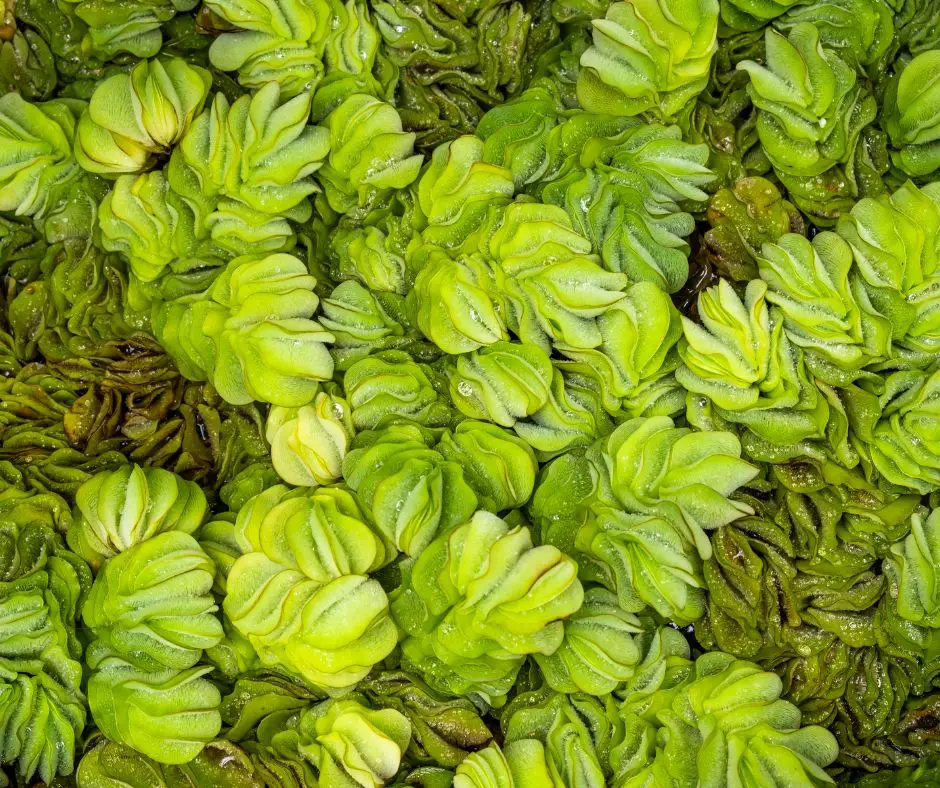
Guppy Grass
It’s no surprise that guppy grass is a favorite tank plant for your Axolotl, and for good reasons. For beginners, this plant is a great choice because of its ease of care and low maintenance requirements.
In addition, it is definitely safe to eat by your Axolotl and it provides various benefits to your pet.
Guppy grass grows best in lower temperatures, which is suitable for Axolotl. It also doesn’t require a lot of light to flourish.
Guppy grass is a floating plant that can be kept in your axolotl aquarium as a decorative element.
As a result, your axolotl will not be able to uproot it from its current location.
Additionally, it is pretty beneficial in purifying aquarium water, eliminating hazardous contaminants, pollutants, nitrite, ammonia, and nitrates.
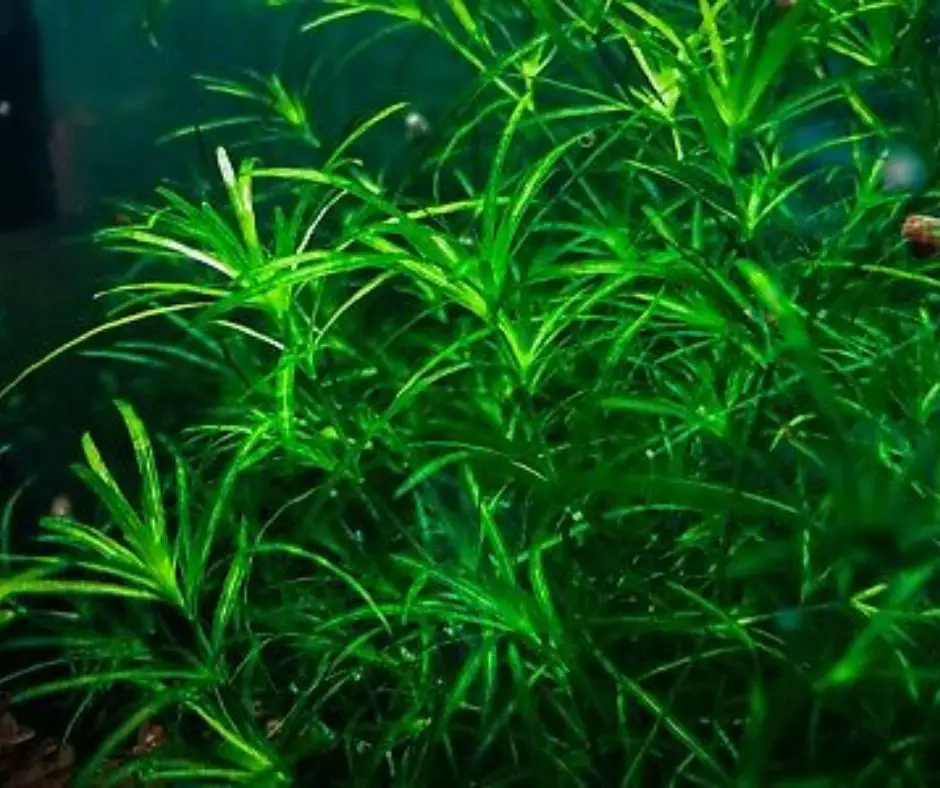
Riccia Fluitans
The look of Riccia Fluitans is similar to that of Java moss. Because they are small and delicate, Riccia Flutians are completely harmless.
This species can grow in the Axolotl tank because it requires less light to survive.
It also functions effectively in colder temperatures, as previously stated. Furthermore, you do not need to incorporate Riccia Fluitans into the substrate of your aquarium.
As an alternative, you must anchor it to driftwood or rocks. Alternatively, you can keep it afloat in the aquarium.
Therefore, if you maintain Riccia Fluitans in this state, Axolotl will be unable to uproot it. This floating plant can transform your tank into a wilderness, enveloping your pet in comfort.
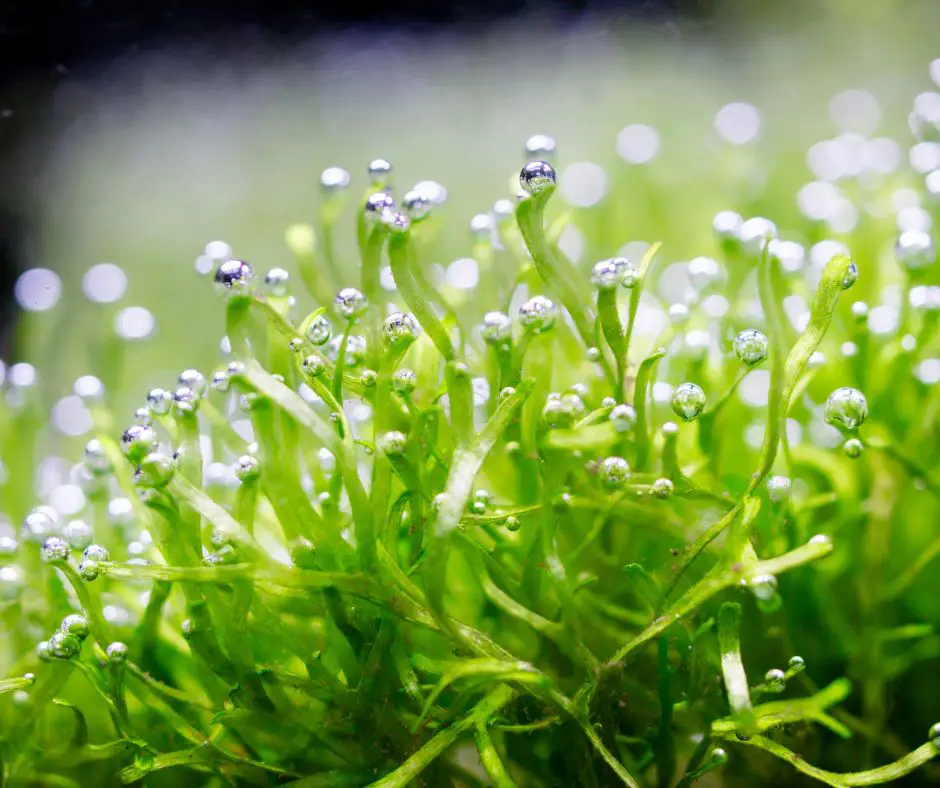
Hygrophila Pinnatifida
Coming up next, we have Hygrophila Pinnatifida, which is another plant that is safe to eat, and one that is completely harmless!
Hygrophila pinnatifida is a perfect contender for Axolotl since it thrives in lower temperatures and low light. As a result, they are able to live together in the same tank.
This plant can grow in a variety of water circumstances and is a famous epiphyte in tanks because it can bloom without being planted in the substrate. You can easily attach this plant to rocks and wood.
Moreover, this provides a beautiful contrast to green plants with their reddish color and unusual leaf form.
This stem plant’s leaf shape and color combination create a unique and one-of-a-kind look, and it has aquascape potential.
Its attractiveness can make the tank appear more beautiful and enticing to the eye!
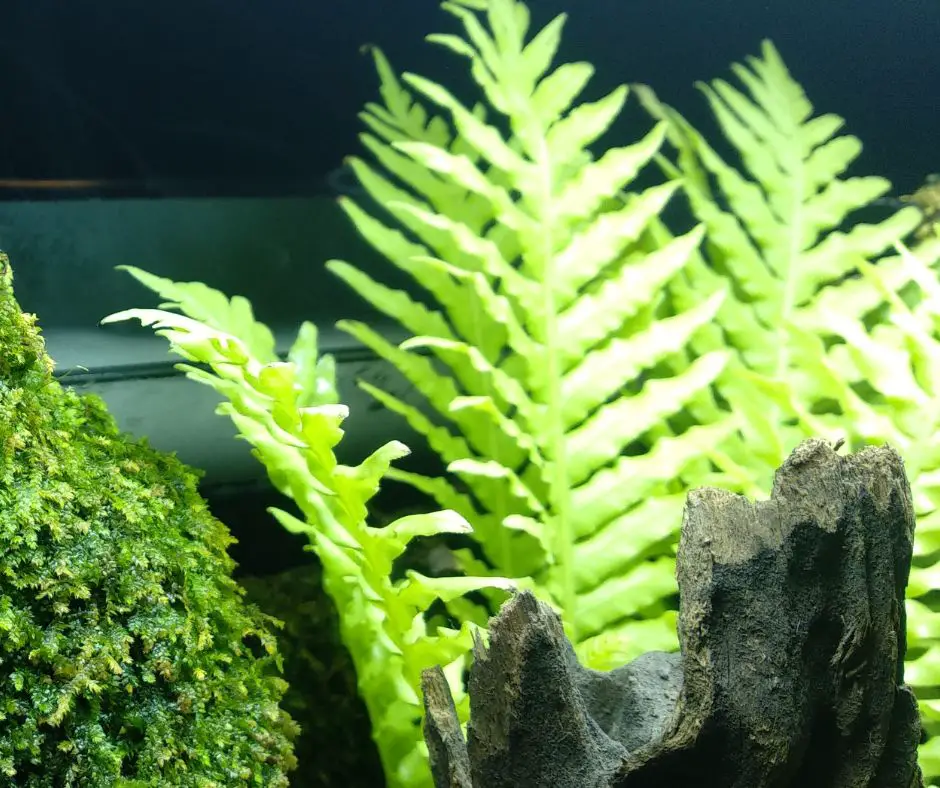
Hornwort
Next on the list is an aquarium plant called “Hornwort.”
This plant is not harmful if consumed, and it also serves as an excellent net for axolotls, catching all manner of food and detritus for them to consume.
Hornwort is a rootless floating plant that provides cover for your axolotl. You can grow it in low-light circumstances, and it also acts as a water filter.
This can assist in regulating your axolotl’s ammonia and nitrate levels, which are critical for a healthy and happy axolotl.
Also read: How to Tell If Your Axolotl Is Happy
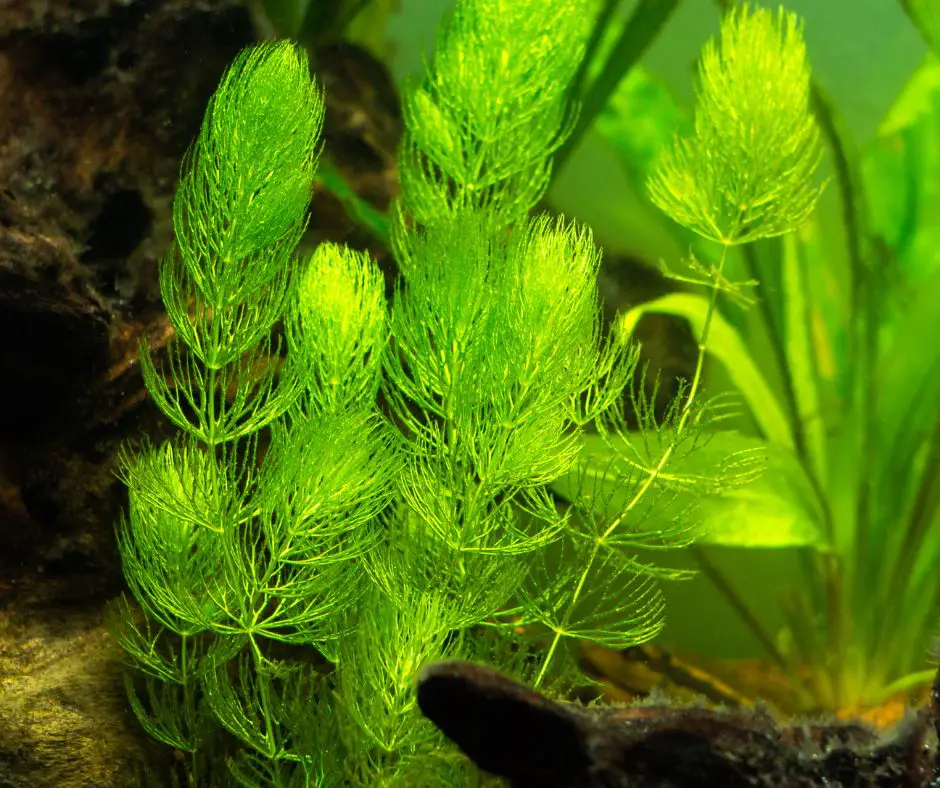
Red Root Floater
The Red Root Floater is gaining favor in the aquarium plant world as a more refined substitute for the rapidly growing duckweed.
Due to their lightweight and thin leaves, these plants pose no threat to your Axolotl.
Red Root Floaters are not just attractive; they’re also quite easy to care for. This plant is self-supporting and does not require aquarium substrate.
Red Root Floaters are little floating ferns that can completely cover the surface of the water in your aquarium.
As a result, they will block light from below and help prevent the formation of undesirable algae.
Additionally, these floaters will improve the elimination of biological waste and other impurities from your tank’s water.
If left alone for an extended period of time, this fast-growing plant has the potential to take over the whole surface of your tank.
6 Red Root Floater (Phyllanthus Fluitans)
- PLEASE DO NOT BUY IF THE DAY TIME TEMPERATRUE IN YOUR AREA IS ABOVE 85 FOR THE COMING WEEK
- Each order contains 6 red root floater
- Each plant should contain 5-10 leaves, see Picture #4 for reference
- A special light for aquatic plants is required to grow water spangles indoor
- This is a freshwater floating plant, no substrate required
Last update on 2022-12-29 / Affiliate links / Images from Amazon Product Advertising API
Sweet Potato Vine
Sweet potato vines are basically terrestrial plants organisms of the same species as the edible sweet potatoes sold in supermarkets.
Although these plants are strong and can grow enormously, their leaves and stems are smooth, so you don’t have to worry about hurting your axolotl.
This plant is ideal for newbies because it requires little light and may live for an extended period of time.
Plus, Sweet potato vines are root plants. Because of its ability to swiftly create a healthy root system, it can be used to aid in water filters as well as provide hiding spots for the Axolotl. To help with filtering, placing the sweet potato stem in water encourages it to produce roots.
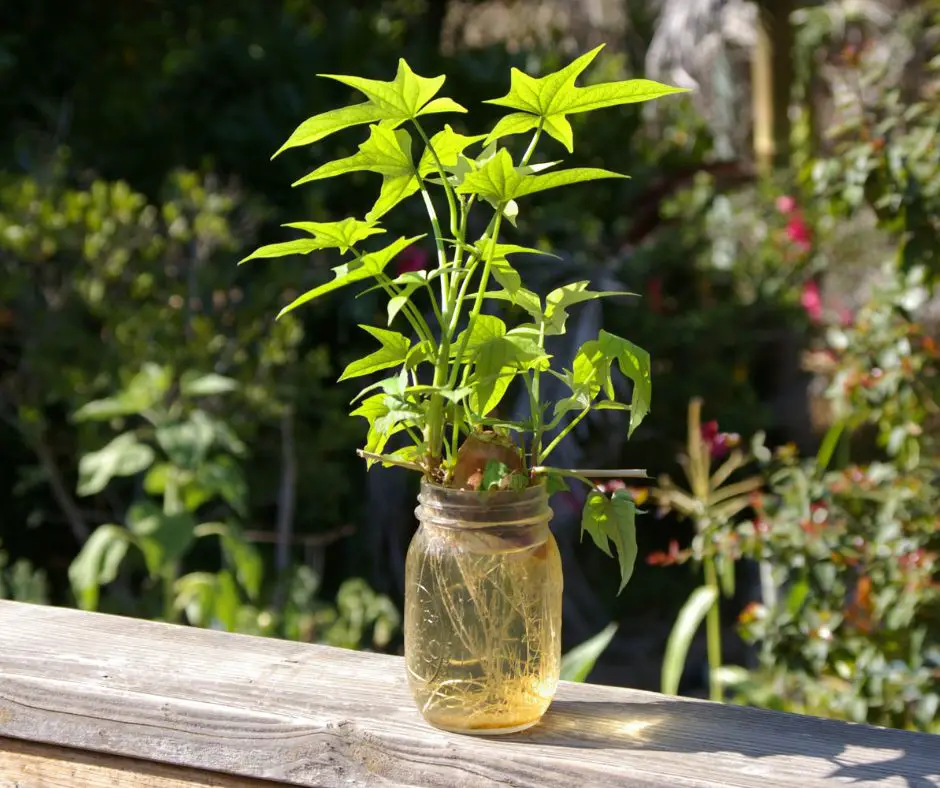
Sagittaria
This easy-to-care-for plant is great for beginners looking to green up their tanks without spending a fortune on equipment and fertilizers.
Additionally, it is a safe plant in case your Axolotl attempts to devour it.
Sagittaria is a rooted plant that requires moderate to high sunlight. It is also the type of plant that provides hiding areas for your axolotl when it feels threatened.
These plants are a wonderful shade of pale green. However, they are invasive, rapidly covering the ground and displacing other plants.
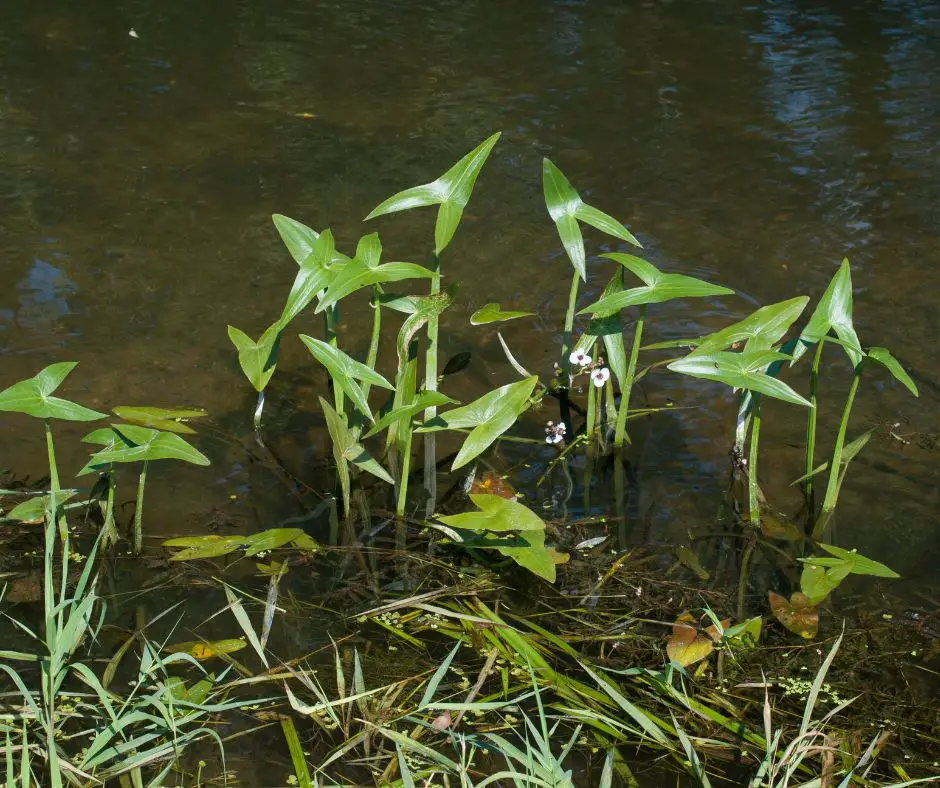
Marimo Moss Ball
Marimo moss balls are one of the easiest “plants” to keep in an aquarium and are excellent for aquarists of all expertise levels. Axolotls flourish beside moss balls due to their same care needs.
While moss balls are not intrinsically dangerous because they are safe for the axolotl to consume when they are small in size, they can create issues if a sufficient amount of moss is consumed.
A little moss ball can strangle or suffocate an axolotl, causing digestion issues and obstructions if it swallows it.
Therefore, if you add moss balls to the axolotl tank, make absolutely sure that they are the right size. It’s better to be safe than sorry, adding moss balls bigger than the axies’s head, so, it can’t fit in its mouth.
Additionally, these plants are great for axolotl aquariums because they do not require or enjoy high lighting.
On the other hand, these algal balls develop exceedingly slowly, expanding in diameter by only about 2 inches per year.
QUMY Aquarium Plants Artificial Plastic Fish Tank Plants
- 5PCS/SET, 13.3 inch tall - 1PC; 7.4 inch tall - 1PC; 5.5 inch tall - 1PC; 4.3 inch - 1PC; 3.9 inch - 1PC
- Material: Plastic plants and ceramic base, do not affect the fish tank.
- Vibrant colors: Invigorate aquarium decor with vibrantly-colored artificial plants, add a bold splash of color to brighten your aquarium landscape. Lifelike water plant ornament give you feelings of aquatic plants with water flowing.
- Low maintenance: Plastic artificial plants don’t need specialised lighting. They won't die, grow too large, or become tattered and unattractive. they don't need any pruning, and will stay beautiful season after season.
- Natural environment: Once it's in the tank you can't even tell it's made of plastic. Your fish will enjoy the environment that these tall plants provide. They can swim and hide through the leaves.
Last update on 2022-12-30 / Affiliate links / Images from Amazon Product Advertising API
Vallisneria
Vallisneria may appear to be sophisticated and complicated, but it is not.
Vallisneria is, in essence, similar to underwater grass or cat grass, at least at times. It is not dangerous if Axolotl takes a bite out of it, which they very definitely will.
Moreover, Axolotls can’t climb it because the leaves are too slender and lengthy to support their weight.
In cool, low-light surroundings, axolotls thrive, and this plant will survive under these conditions.
This is advantageous in terms of care because cool temperatures and low light help this plant to develop much more slowly, minimizing the need for maintenance.
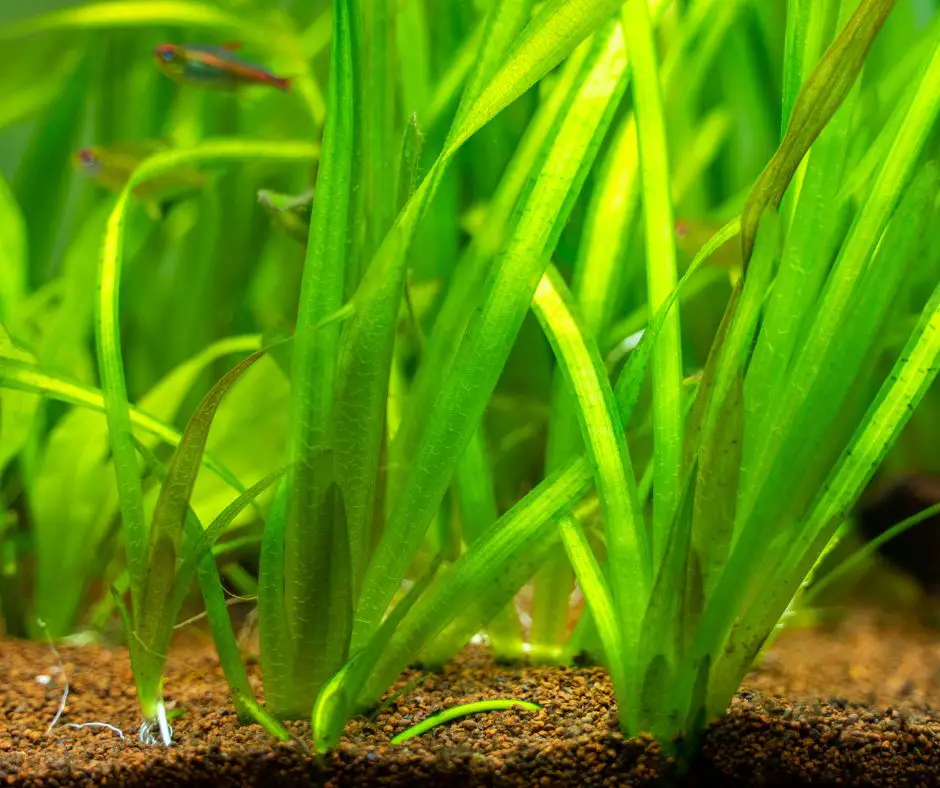
Dwarf Hairgrass
Last but not least, we have dwarf hairgrass. This is yet another excellent axolotl tank choice to consider.
Dwarf hairgrass is completely safe for your pet to consume, and it isn’t huge or robust enough to act as a climbing aid in the event of an escape.
Despite its delicate appearance, Hairgrass is extremely resistant and resilient. When it comes to water conditions, it can withstand a wide range of situations.
This includes the chilly and dimly light tanks of axolotls.
You can also secure the plants to stones or driftwood, and they can even live in a sand substrate if you use the proper techniques.
However, Hairgrass does not grow very tall, only a few inches at the most, making it an excellent midground and foreground addition.
Additionally, Hairgrass can assist in providing your axolotl with some small hiding spots, and food can become stuck in the grass, making it an excellent scavenging resource.
Dwarf Hairgrass Eleocharis Sp Mini Tissue Culture Cup
- LIVE AQUARIUM PLANT - 1 Dwarf Hairgrass Sp Mini Vitro Cup.
- CUP SIZE - 2"
- FREE ICE OR HEAT pack - Due to extremely weather, Ice and heat pack is available up on request. Simply put "ICE" or "HEAT" after your name on your shipping address.
- 7 DAYS STAY ALIVE GUARANTEED - We stand behind our products. For some reasons If our plants died within 7 days, please message us with a clear photo. Refund or replacement will be applied.
- With 30 years experience, please ensure that you will receive the best quality. Please do not hesitate to contact us if you have any question or concern. Our customer service team would be very happy to help you.
Last update on 2022-12-29 / Affiliate links / Images from Amazon Product Advertising API
Conclusion
Adding live plants to aquariums enhances their beauty and provides a more natural habitat for the fish.
Adding live plants to your aquarium is a wonderful method to improve the water quality and reduce stress for your fish.
On the contrary, adding live plants has little impact on the frequency of water changes.
For axolotl tanks, it’s important to choose plants that can tolerate chilly temperatures and don’t necessitate a lot of light.
If you’re growing plants in tanks, look for ones that are low-maintenance and profitable. Several plants, for example, have the ability to purify water. They are also capable of removing nitrates from a tank.
It is as if you were living in the axolotl’s natural habitat if you can distinguish the difference between many of its friendly plants.
